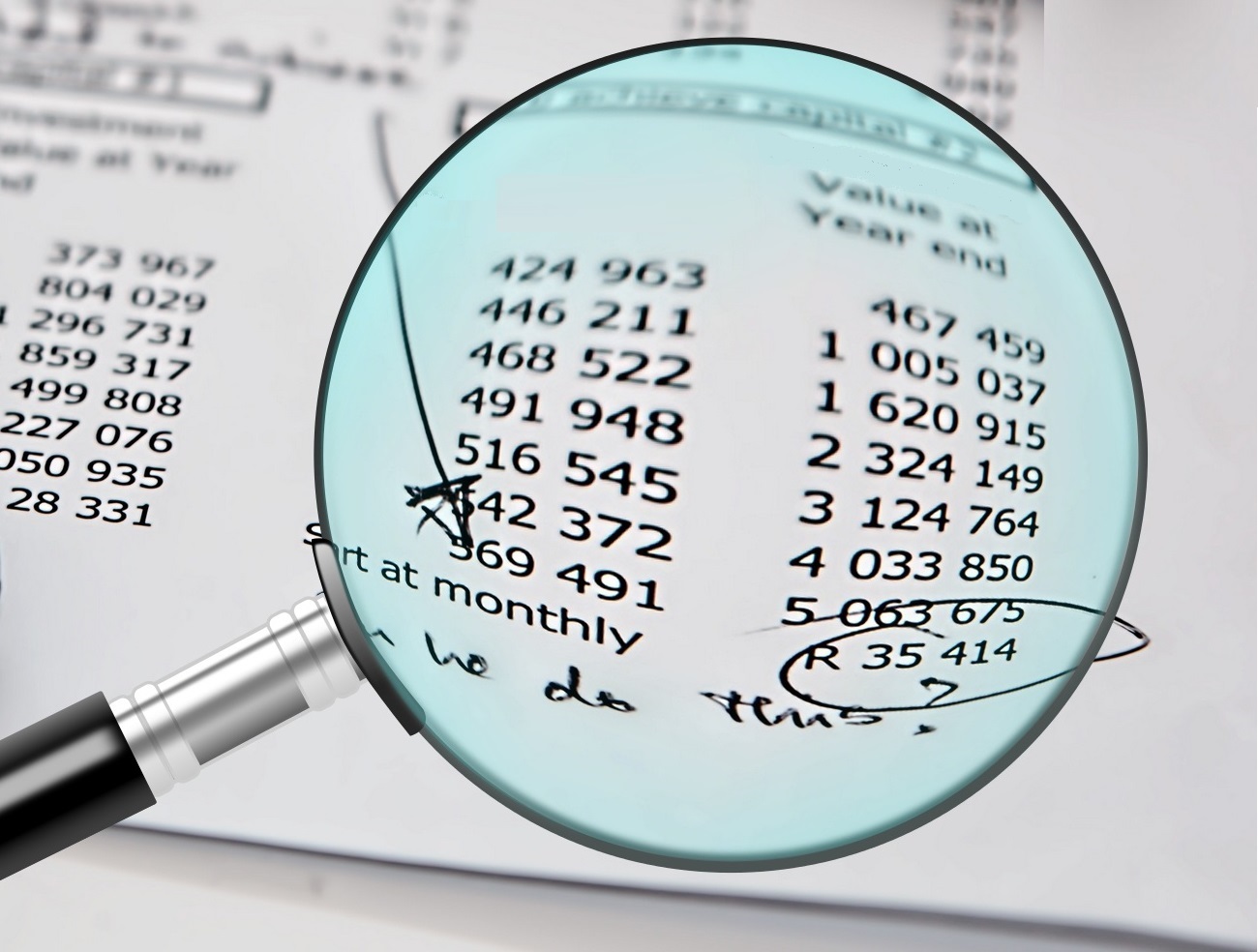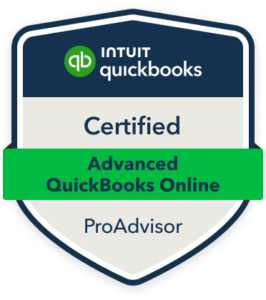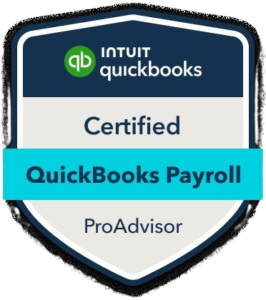
Basics for Small Business Owners
Bookkeeping Basics PDF for Small Business Owners
FACEBOOK TWITTER LINKEDIN By: Julia Valdez
By: Julia Valdez
Want help with your bookkeeping? We make it easy. Get started, Speak w/ a Founder, or Schedule a Callback.

Wish you had a bookkeeping basics PDF with the essentials you need to know about doing your books?
Your wish is our command!
In this post, we will go through the fundamentals of bookkeeping from definitions to concepts and key processes. By the end you should have a foundational understanding of financial recordkeeping.
Speaking of…
What is Bookkeeping?
Bookkeeping is the daily process of keeping organized and accurate financial records. Bookkeeping duties include recording transactions, balancing accounts, creating financial reports, and preparing for tax season.
Can I Do My Own Bookkeeping?
DIY bookkeeping is good for smaller businesses looking to get a handle on their finances and save a little money in the beginning. However, DIY bookkeeping loses some of its value when a business scales. This is because you can spend way too much time on it. It can pull you away from your other core business duties. These duties can even be ones that made your business successful in the first place.
Bookkeeping Basics Worksheet Checklist

1. Understand the Purpose of Bookkeeping:
Organization and Accuracy
This is essential to proper financial management. When you know exactly how much you earn and spend, you know how to move forward with operations. By keeping organized records, you can identify trends in your spending and come up with money-making strategies.
Compliance
There are several tax laws and regulations a business must adhere to. If not followed, this could lead to serious sanctions and possible business closure. This makes proper accounting and bookkeeping not only a suggestion, but a must.
Financial reporting and decision-making
Financial reports are an excellent way to gauge the performance of your business. These show key metrics relating to your revenue, expenses, equity and more. From these concrete numbers you gain insight into your spending habits and other important cash flow behaviors.
From the data gathered in these reports, you can then make informed business moves. For instance, say, you’re looking for areas where you can reduce expenses. From the reports, you notice the majority of your expenses come from overheads. That already helps you narrow down what could be the biggest siphon of funds. It could be rent, utilities, or in-house employment costs. With these reports, you can improve quality, optimize operations, and make profitable moves.
Financial Transparency
We mention this in our bookkeeping basics for entrepreneurs PDF for a reason. That’s because investors can play a crucial role for businesses. One of the biggest hurdles for companies that want to scale is the need for funding. These reports show potential shareholders if your company is a worthwhile, long-term investment. The more organized your financials, the better it reflects on you and boost your chances for funding.
2. Familiarize Yourself with Basic Accounting Concepts:

Systems
There are two systems of bookkeeping, which follows either the single entry or the double entry accounting system.
- Single entry – Only records one side of a transaction. For instance, this would only record revenues and expenses.
- Double entry – Records both sides of a transaction. This system operates under the concept that transactions affect at least two accounts. We record these as debits and credits.
Debits and Credits
Debits and credits refer to the incoming or outgoing income to and from accounts, respectively. The debits increase the value of assets and expense accounts and lower the value of equity, liability, and revenue accounts. The credits decrease the value of assets and expense accounts and increase the value of equity, liability, and revenue accounts.
Assets = Liabilities + Equity
If you’ve heard the term “balance your booksâ€, this equation describes that pretty well. The balance sheet, which is a key financial statement, is based on this accounting concept.
3. Learn the Different Types of Accounts:

There are five main types of accounts:
- Assets – These refer to all business resources, tangible or intangible, that are innately valuable or convertible to cash. These can be current assets like cash, cash equivalents, or items easily converted into cash. Non-current assets include things that are not easily convertible to cash, such as long-term investments and land.
- Liabilities – This refers to all obligations like debts or loans that a business must pay to other entities. These can be current (payable in a year) or long-term liabilities (not payable within a year).
- Equity – This refers to the amount of money invested into a company or owed to company shareholders/owners. This is also what remains when subtracting liabilities from assets.
- Revenue or Income – This refers to the total funds a business earns through core business operations. This includes selling products or services.
- Expenses – This is the amount you spend at every stage of operation. Operating expenses is the cost of running your business. These include equipment costs, maintenance, salaries and wages, utilities, rent, CoGS (Cost of Goods Sold), and taxes.
Each account can have various sub-accounts. The number of sub-accounts you have depends on how complex your business transactions are.
Common sub-account for each account type include:
- Asset – Cash Account, Accounts Receivable, Inventory
- Liabilities – Accounts Payable, Bank Loans, Income Tax Payable
- Equity – Retained Earnings, Common Stock
- Revenue – Product Sales, Physical Sales, Site Sales
- Expense – Advertising Expense, Payroll, Overheads
4. Get Acquainted with Financial Statements:
The three primary financial statements we will mention in our bookkeeping basics PDF are:
- Income Statement – It is also known as a Profit and Loss Statement. Businesses usually prepare them monthly. They contain data on the revenues, gross and net profits, and expenses of a company.
- Balance Sheet – Here we list all our assets, liabilities and equity. This is where the equation earlier is applied. If all your assets equal your liabilities plus equity, your books are balanced and accurate. This statement only applies to businesses who use the double entry system.
- Cash Flow Statement – This statement lays out the flow of cash in and out of a company. It includes funds gained through operating activities, investing activities, and financing activities. This shows how capable a company is at meeting its obligations and funding business operations.
These statements provide insight into the financial health of a business. These show owners and investors how well business is performing.
5. Choose a Bookkeeping Method:

There are two methods of bookkeeping: accrual and cash.
The major difference between the cash and accrual-basis bookkeeping methods lies in the time you record transactions.
- Cash basis – You record transactions when you give or receive payment.
- Accrual basis – You record a transaction when you receive a bill or issue an invoice.
Accrual basis operates on a credit system. Accrual basis follows the Generally Accepted Accounting Principles (GAAP) while cash does not.
In our bookkeeping basics for entrepreneurs PDF, we recommend the double entry system and the accrual method for bookkeeping.
6. Master Basic Bookkeeping Entries:
Journal entries are concise but accurate records of each business transaction. We use journal entries in double entry accounting and record the debits and credits of the affected accounts. These entries are the foundation of all financial reports. So, it’s crucial that you record these properly.
The anatomy of a typical journal entry includes:
- The date of the transactions
- A brief description of the transaction
- The amount paid
- The accounts that are credited and debited
For example: On February 12, a company buys $100 dollars worth of office supplies.
DateAccount DebitsCreditsFebruary 12,
20XX
Office Supplies $100Cash Account $100Purchased $100 of office supplies
7. Use Accounting Software:

Manual bookkeeping takes a lot of time. Thankfully, we have access to accounting and bookkeeping software. These popular tools like QuickBooks, Xero, or Wave don’t just make it easier to do your books. They also save you time by automating certain parts of the process.
For instance, they can categorize transactions into the proper accounts, do bank reconciliation, and more. If you need reports, you can schedule regular reports and they will generate it for you. You can also set which metrics you need to track.
8. Practice Bank Reconciliation:
Whether done manually or automated, bank reconciliation is a necessary process to ensure the accuracy of records.
This is comparing your bank statement to your cash account in your general ledger and making sure they line up. It’s rare that both records line up right away. So, this process is about correcting discrepancies. These errors arise because of delayed payments, bank fees, NSF checks, processing delays, or even fraud.
9. Learn Payroll Basics (if applicable):
Next in our bookkeeping basic PDF, let’s cover the basics for payroll.
- Regulations – You need to be familiar with federal, local, and state tax regulations and stay updated on them. You should also know how much payroll tax and benefits withholdings to deduct from paychecks.
- Setting a Payment Period – Indicate when employees get paid. This can be daily, biweekly, monthly, etc.
- Calculating Pay – A simple gross pay calculation would be to multiply workers’ hourly rates by the number of hours. You find net pay after subtracting necessary deductions for benefits, taxes, etc.
Now, payroll processing can be a complex procedure. There’s a lot that goes into it. That’s why payroll software exists to help automate some processes.
10. Understand Sales Tax and VAT (if applicable):
Sales tax and VAT or Value-Added Tax or two types of consumption tax. A consumption tax is a tax levied on the sale of a product or service. Both are collected as a percentage based on the selling price of the goods. There is a fundamental difference between the two.
Sales tax is levied at the point of sale meaning only the consumer or end user pays the sales tax. The retailer collects this tax and remits it to the government.
VAT is also based on the percentage of the selling price of the product. However, with VAT though, the government collects it at every stage of production. Every time value is added to a good or service (hence the name) or sold, the purchasing entity collects a tax. Retailers remit this to the government minus the expense of materials used that they have already taxed.
11. Create a Chart of Accounts:

A Chart of Accounts (COA) is a complete record of all the accounts and sub-accounts that are used to categorize business transactions. As we mentioned earlier, a business can have many subtypes of the 5 main accounts based on their needs.
A COA has 3 main parts:
- Account Number – This is an identifier that makes it easy to locate certain transactions. These numbers typically range from 1-5 representing the 5 main types of accounts. These numbers can be as large as necessary but small businesses typically use 3-4 digits.
- Account Type – These are the main 5 accounts: assets, liabilities, equity, revenue, and expense.
- Account Description – This is usually a short name that characterizes a sub-account. Ex. Rent Expense
Other COAs also include the financial statement associated with the account.
12. Practice Regularly:
Our next piece of advice in the bookkeeping basics PDF is simple. Bookkeeping means daily record keeping, so do it daily. When you don’t consistently maintain records, you run the risk of making an error or failing to account for a transaction. For some who have large volumes of transactions, they even update records more than once a day.
Reporting is a different story. The majority of bookkeepers perform reconciliation and reporting duties on a monthly basis. This is typically because there is not enough data to justify doing these earlier.
13. Seek Resources and Training:
If you choose to do your own books, it can take a bit of work. There are a lot of concepts to grasp, so we recommend going over our bookkeeping basics worksheet PDF every once in a while. There are also videos, online classes, and blogs (like ours!) you can go through to equip yourself thoroughly.
Also, make it a habit to ask for guidance from experienced bookkeepers and accountants. They have years of training and have worked with several clients from businesses of all sizes. You can ask for resources on tax updates, recommendations for streamlining your financial management, and more.
14. Understand Financial Analysis:
Last but not least, on our bookkeeping basics worksheet PDF is financial analysis.
This is the process of gleaning insights from financial statements and other reports. You can use certain financial ratios to assess how well your company is performing. From these you can look at trends and come up with strategies for improving profitability. Through these processes, businesses can determine their short and long-term viability.
What Is EcomBalance?

EcomBalance is a monthly bookkeeping service specialized for eCommerce companies selling on Amazon, Shopify, Ebay, Etsy, WooCommerce, & other eCommerce channels.
We take monthly bookkeeping off your plate and deliver you your financial statements by the 15th or 20th of each month.
You’ll have your Profit and Loss Statement, Balance Sheet, and Cash Flow Statement ready for analysis each month so you and your business partners can make better business decisions.
Interested in learning more? Schedule a call with our CEO, Nathan Hirsch.
And here’s some free resources:
- Monthly Finance Meeting Agenda
- 9 Steps to Master Your Ecommerce Bookkeeping Checklist
- The Ultimate Guide on Finding an Ecommerce Virtual Bookkeeping Service
- What Is a Profit and Loss Statement?
- How to Read & Interpret a Cash Flow Statement
- How to Read a Balance Sheet & Truly Understand It
Conclusion
And that’s basically what’s in our bookkeeping basics PDF! We sincerely hope you learned something that can drastically improve the way you do your own books. If there were any terms you were confused by, why not check out our “50 Accounting Terms, Definitions, & Explanations for Business Owners†for reference!

